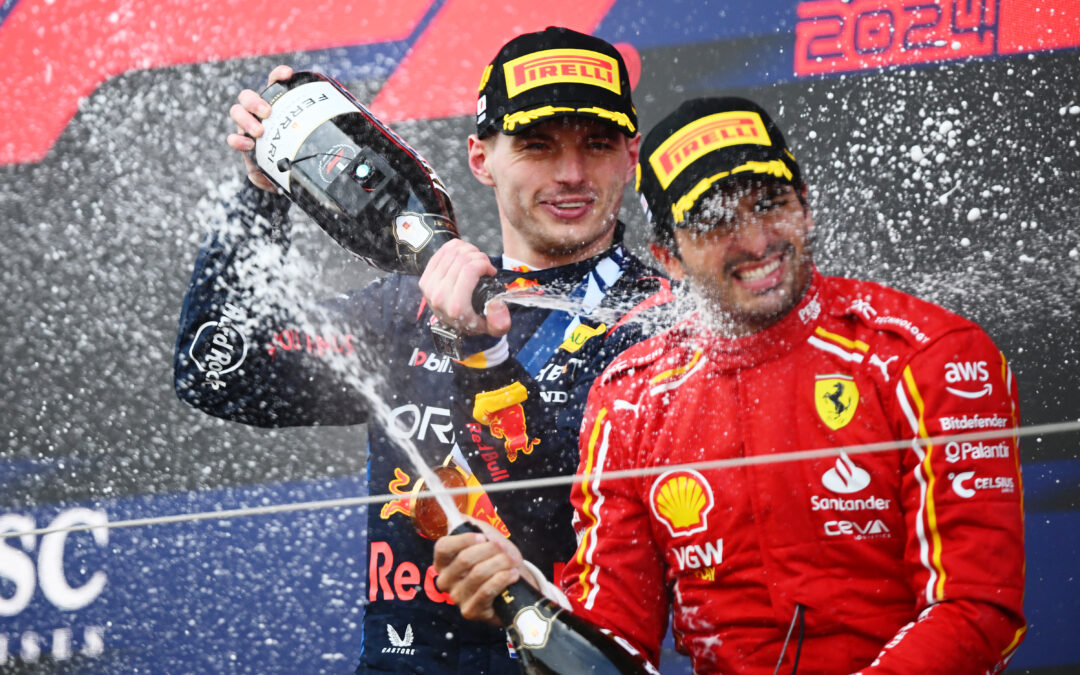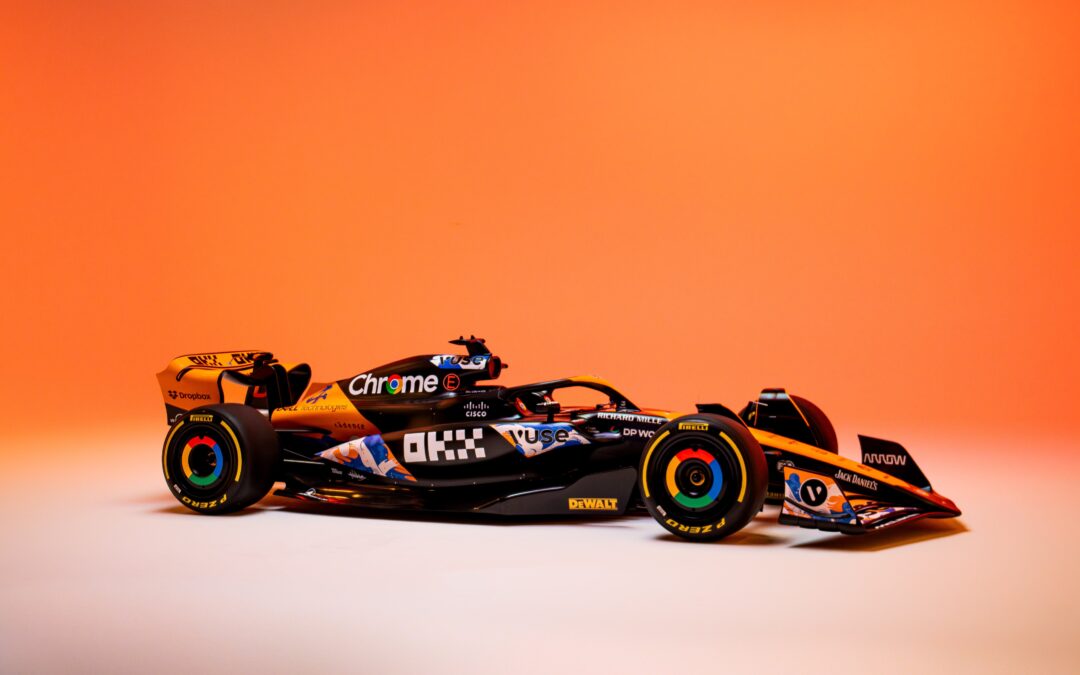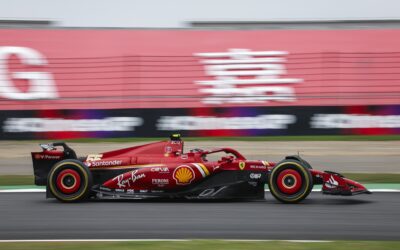Haas was the first team to launch its 2023 season, presenting the livery of the VF23 on January 31st. Last Friday, after completing the first of the two 100 km filming days granted by the FIA, we had the opportunity to see the VF-23 in all its splendour.
While Alfa Romeo has concentrated its efforts on the rear of the car, the Haas engineers working in the Maranello design offices have placed more of an emphasis on developing the front.
Haas VF-23: A completely redesigned front suspension
The proximity of the Ferrari and Haas design officers, and the similarities between the VF-23 to the 2022 car driven by Leclerc and Sainz, have raised new questions about the transfer of knowledge that could take place between the two (watertight) departments.
It cannot be denied there are some clear similarities between the VF-23 and the F1-75, but for the sake of this analysis – the American team’s 2022 machine offers the best medium for comparison.

The American team’s new design is a clear evolution of last year’s car, with a strong emphasis on the nose, front wing and suspension – especially the front suspension.
These are the elements that first pass through the airflow and shape the flow of the car. Comparing last year’s design to this year’s, you can see a significant change in the shape of the front wing.
This year’s solution is more loaded in the centre section [1], with a maximized outwash effect [2] to keep dirty air from the wheels away from the car. With the raised floor edges, the aim is to minimize the dirty air generated by the front wheels – which is one of the main priorities for engineers on these 2023 cars.
This must be achieved without sacrificing the crucial balance between the front of the underbody, the nose and the front wing with the rear.

As seen on the VF22, the main flap [3] has been lowered slightly in the center section – creating extra space for clean flow under the nose. This change goes hand in hand with the important modification of the surface profile directly under the nose of the car [4], which aims to improve the flow at the entrance to the tunnels that run underneath the car.
A big change has also involved the front suspension, one of the macro areas where Ferrari has worked extensively on its car, the SF-23, which will be presented tomorrow at 11.25.
While the attachment points of the upper elements have been raised [5], the steering rod has been integrated into the lower wishbone [6], similar to what Red Bull and Mclaren did on their 2022 cars.
The result is certainly far cleaner aerodynamically, with the aim of channelling the flow that rises from the front wing downwards. Moving the car’s track rod down allowed Haas, but also Ferrari, to redesign the brake cooling vents [7].
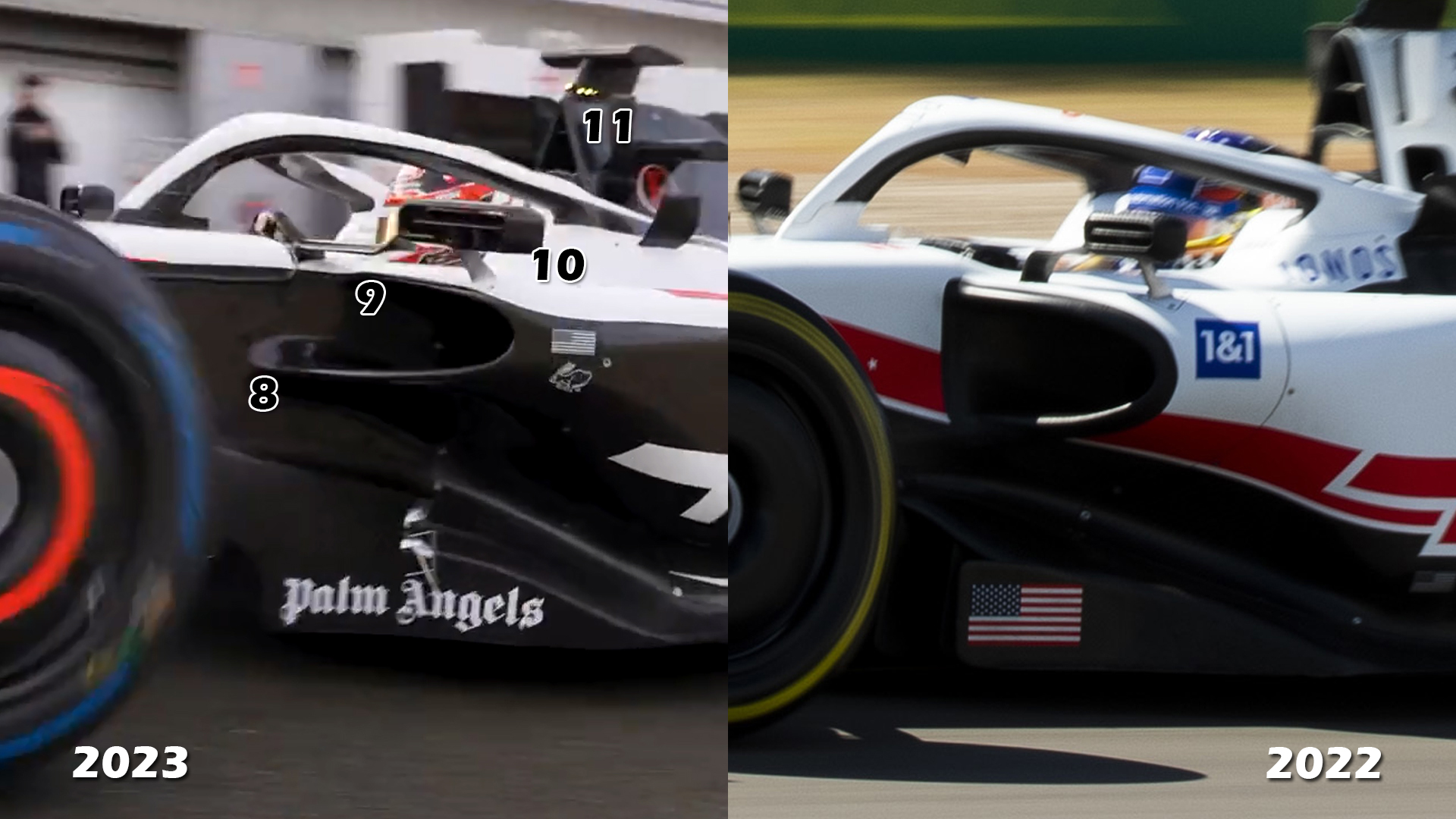
Haas VF23: A smaller air scope
While Haas has kept Ferrari’s aerodynamic philosophy, the team has evidently been inspired by Red Bull with the inlet of their cooling vents, which have changed shape: the lower lip remains on the edge established by the regulation [8] while the upper surface was moved to the ‘back [9].
All of this has a positive effect on the car’s cooling efficiency, especially on the airflow in the deep undercut under the sidepods. Mirrors are one element that will change across all designs this year. However, Haas has taken advantage of the rule change to create a solution that reduces drag and allows for better flow management in the sidepod area [10].
The air scope inlet [12] is clearly smaller compared to the already tiny 2022 specification, thus maintaining the same aerodynamic concept that distinguished Haas and Ferrari last season.
Unlike Alfa Romeo, who switched to centralized cooling despite their Ferrari engine, Haas maintains a narrow engine hood and an exposed shark fin [14], even if the elements that make up the car’s cooling were repositioned as on the SF-23.
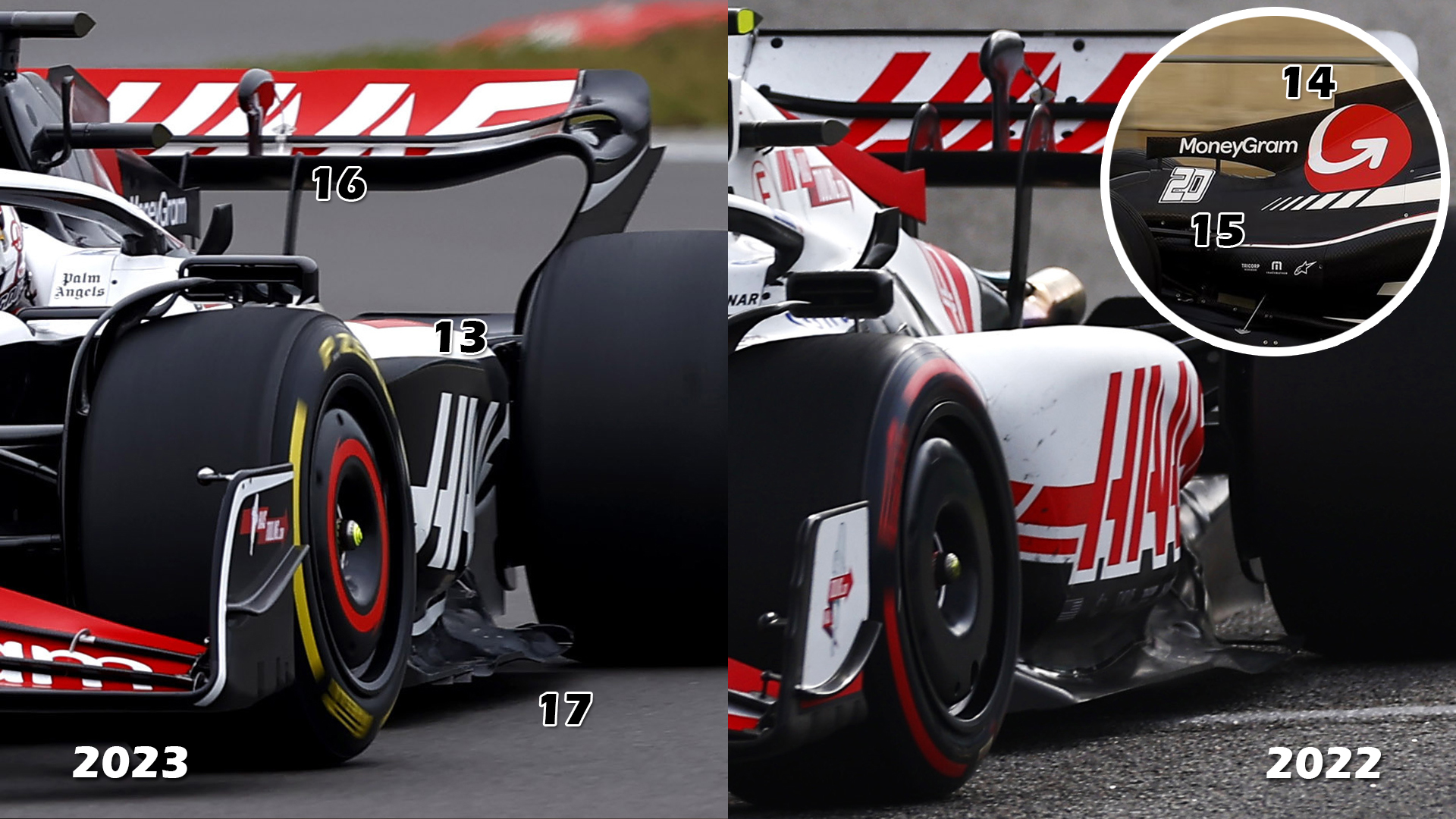
The shark fin has been reshaped to improve the cornering performance of the rear wing. The engine hood has a characteristic hump [15], which hides the exhaust pipe of the Ferrari 2023 power unit.
Moving on to the rear wing, the two holders are very interesting to analyse. During the team’s filming day, held at Silverstone on Saturday, two solutions were tested, one of which did not have the now famous swan necks (used on the VF22) but integrated with the main panel from below [16].
There are new elements on the edge of the floor [17] compared to last year’s construction, taking up the bottom introduced by Ferrari in France, which is unsurprising considering the change in the technical regulations and the need to raise the floor by 15 millimetres.
Sealing the underbody and that crucial space between the rear wheel and the outer edge of the diffuser is crucial to generating a high amount of downforce for the entire car.
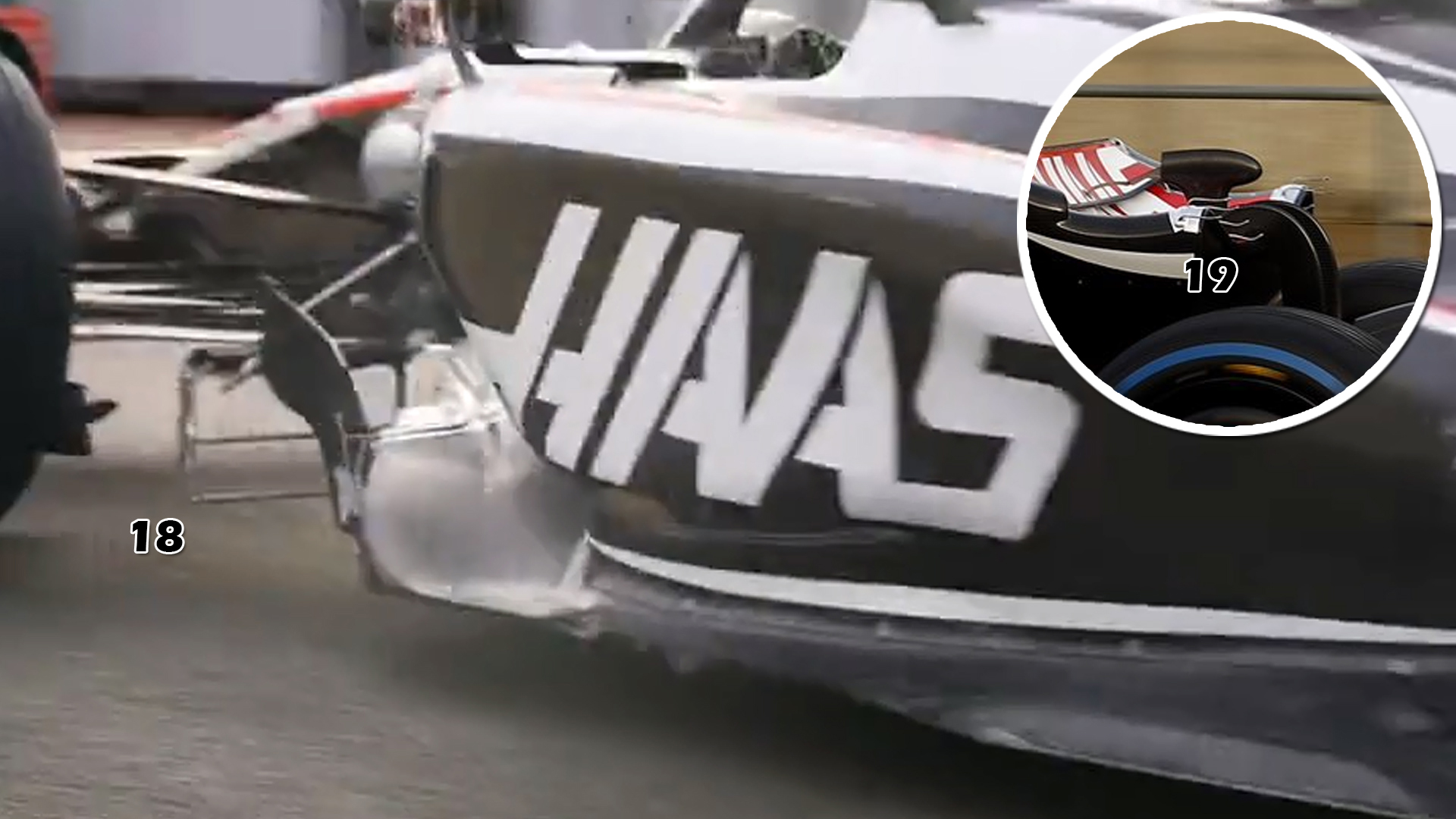
The significant number of measuring tools used throughout the day of shooting is also worth noting. The engineers concentrated on two areas: the flow at the entrance to the underfloor tunnels and the area around the outer parts of the rear wing.
Haas was looking for confirmation that the changes made to the front of the car and around the bonnet were producing similar results to what was seen in the simulations and wind tunnel.
Author: Daniel Bialey
Co Author: Piergiuseppe Donadoni
Translation: Jaden Diaz-Ndisang





